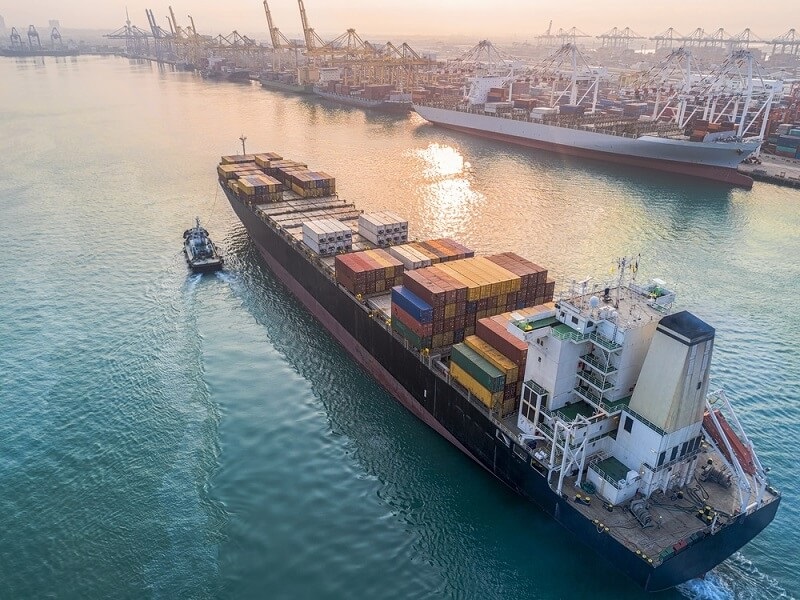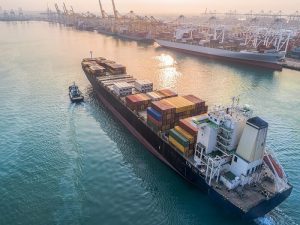With eCommerce booming, freight shipping has become essential for several businesses. However, with many fees affecting rates, keeping track of them can take time and effort.
Any shipment larger than 30 inches by 30 inches by 30 inches or weighing more than 150 pounds classifies as a freight shipment. Freight shipments are typically loaded on pallets or containers for more accessible transportation.
Weight
Weight is one of the most important factors when understanding freight shipping costs. It determines the price of transporting your shipment by road, rail, air, or sea. In addition to the weight of your package, density, and freight class are also important considerations when calculating shipping rates.
When you calculate freight shipping costs, the net weight of your product is used (the importance of the product without its packaging). The tare weight of the package is then subtracted to determine the shipment’s actual weight. The greater of the two is then used to calculate your rate.
If your shipment is too large to fit into a container, it’s called less-than-container load (LCL) shipping. This type of shipping is usually cheaper and faster than other options, as there is minimal shipment handling. LCL rates are based on weight and density, as well as distance. The lower your freight’s class number, the less you pay per pound. To determine your freight’s class, you must know its net and gross weight and dimensions. A high precision milligram scale by Arlyn Scales provides you with weight measurements that are 10 to 20 times more accurate than standard strain gage scales. Arlyn Scales’ groundbreaking use of Surface Acoustic Wave technology, you get accuracy comparable to that of a magnetic force restoration scale but at a much lower cost.
Density
The weight of your shipment is one of many factors determining its shipping costs. How much space your shipment takes up in the truck also matters. This is why many carriers use dimensional weight when charging for freight, calculated by multiplying the package’s length, width, and height and then dividing it by a carrier’s dimensional divisor.
The resulting number is then divided by the product’s cubic feet to find its density (in pounds per cu. ft.). The higher the shipment’s density, the lower its freight class and the less it will cost.
Density is a substance’s physical property determined by its mass and how much space it takes up. The equation for density is d = m/v, where m represents the mass of the substance and v stands for volume. Different materials have different densities based on their size, the number of groups they contain, and how they are arranged. For example, a block of metal is more dense than Styrofoam. Density is also why wood floats in water and anchor sinks.
Distance
The farther your freight has to travel, the more it will cost. This is a simple but important factor when choosing a shipping mode.
The cost of your freight depends on the distance from the pickup and delivery points and the route taken between them. This is why it’s essential to ensure you understand your shipment’s full extent before selecting a transport mode. For example, if your freight has to go through a new or unserviced lane, this will cost you more than sending it through a regular route. Carriers don’t want to be stuck ‘deadheading’ – they want enough loads on their schedules to be profitable. AxChange allows you to monitor weights on multiple scales at your location connecting scales to the internet. Being a cloud application, AxChange can be accessed on any device including your PC, iOS and Android devices. With real time weight tracking, customized alerts and hierarchical access control, AxChange can solve many issues brought about by weight application especially in a remote driven world.
In this case, it would be worth using an LTL carrier with an extensive distribution network in the area to avoid paying excessive fees for out-of-area routes. Also, remember that many trucking companies have minimum charges for their services based on freight class and distance. These are additional factors to keep in mind when preparing your requests for quotes (RFQ) and requests for pricing (RFP). This will ensure that you get the best rate possible for your shipments.
Class of Shipment
Freight shipping is integral to any eCommerce business but needs to be clarified. Understanding all the factors determining freight charges is essential to ensure your goods reach their buyers without disruptions or extra fees.
Class of shipment is one of the most critical factors in freight shipping costs, and there are a few things to keep in mind. First, it refers to how easy the freight is to stow and transport other items on a truck. Generally, more difficult cargo to store or stack will be charged higher classes. This can include oversized items regulated by the government or have odd dimensions that make them difficult to load.
To calculate your freight class, multiply the item’s length, width, and height by 1,728 (1 728 cubic feet in a truck). You can also use online classification calculators to help you determine the correct class but remember that these tools are only estimates and may not be accurate for every item.
Carrier
Shipping goods from point A to point B is a big part of your business, and knowing what to look for is essential. This guide breaks down what makes up a freight rate and how to use innovative freight benchmarking to ensure you pay the best price possible. Freight is a term that encompasses any cargo that does not qualify for parcel shipment – think anything that weighs more than 150 pounds or exceeds 108 inches in length plus girth (two times width plus height). Knowing what qualifies as freight can help you decide which transportation suits your goods and can save you money by choosing the exemplary service.
Carrier pricing also fluctuates based on the distance of your shipment. The longer the space, the more it will cost, especially if your product needs to go by unserviced routes or unused lanes. Regional carriers typically only deliver in a limited area, and it can get expensive if you need to transfer your freight to a national page midway through the trip.







